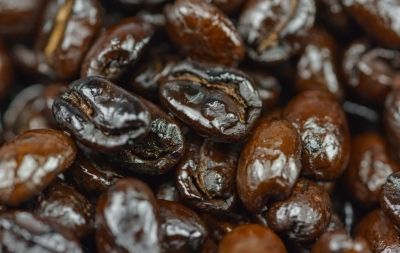Arabica coffee is the most popular variety of coffee bean produced in the world. They account for about 60% of all coffee varieties and are grown in dozens of countries. But many people are curious to know where it originated and where it’s grown today.
That’s exactly what we will dive into in this article.

What country does arabica coffee originate from?
It is believed that arabica beans from the coffea arabica plant originate from southwestern Ethiopia in the Illubabor and Kaffa provinces. However, many experts credit Yemen for popularizing the bean more than 700 years ago because they cultivated the crop and distributed it abroad to other countries[1].
Today, arabica coffee is the most widely consumed type of coffee and accounts for about 60% of the world’s coffee production.
Where is arabica coffee grown?
Arabica coffee is grown in regions with an altitude of 1,300-1,500m (4,265-4,921 feet), a temperature of 18-21°C (64-70°F), and annual rainfall of 50-80 inches. Consistent temperatures and rainfall prevent frost and disease from hurting the crop and reducing its yield.
Drastic fluctuations in climate makes it more difficult for farmers to produce a good crop. For example, Columbia experienced a 30% decline in production in 2008 due to excessive rainfall, which lasted for 5 consecutive years[2]. They also experienced a period of drought in 2014 that also reduced coffee production.
Arabica producers must have 50-80 inches of consistent rainfall
Arabica beans are grown best in very specific environmental conditions. The best arabica producers get between 50-80 inches of rain during the growing period, which usually lasts about 9 months.
It’s important for this rainfall to be distributed evenly throughout the active growing season or else coffee leaf rust (CLR) or berry disease may occur. A single month without rain may cause crop disease and reduce the yield.
Arabica coffee is usually grown at a 1,300-1,500m altitude with stable temperature
The coffea arabica plant, which produces arabica coffee seeds or beans, is often grown at an altitude of between 1,300-1,500m (4,265-4,921 feet). However, it is grown in some regions as high as 3,000m (9,842 feet)[4].
The altitude largely influences a region’s temperature throughout the year.
Arabica beans grow best at a temperature range between 18-21°C (64-70°F). This temperature is common in many regions across the world. However, what’s important for successful arabica growth is a stable temperature that doesn’t fluctuate too much – especially if it causes frost.
As a result, countries near the equator in what’s known as the “bean belt” tend to produce optimal growing climates. This is between the latitudes of 25 degrees North and 30 degrees south.
Arabica beans are more difficult and expensive to grow than robusta beans
The altitude, rainfall and temperature requirements for growing arabica beans limits where it can be grown in the world. An increasing number of countries are growing arabica coffee but only certain regions within a country are capable of achieving this crop’s demanding environment.
These highly demanding conditions cause arabica beans to be more expensive than robusta beans[5]. Arabica coffee beans are often more than twice the price of Robusta beans, according to the International Coffee Organization[3].
Which countries grow the most arabica coffee?
Brazil, Colombia, Ethiopia and Honduras are the top producers of arabica coffee by volume. But more than 80 countries are known to produce some quantity of the crop each year. Arabica producing regions need warm temperatures, consistent rainfall and an altitude between 1,300-1,500m (4,265-4,921 feet).
References
- Chevalier, A. (1929). Coñee trees of the world-generalities. Coñee trees of the world-generalities.
- Cristancho, M. A., Rozo, Y., Escobar, C., Rivillas, C. A., & Gaitán, A. L. (2012). Outbreak of coffee leaf rust (Hemileia vastatrix) in Colombia. New Disease Reports, 25(19), 2044-0588.
- International Coffee Organization. (2014). World coffee trade (1963–2013): a review of the markets, challenges and opportunities facing the sector. London: International Coffee Organization.
- Meyer, F. G. (1965). Notes on wild Coffea arabica from Southwestern Ethiopia, with some historical considerations. Economic Botany, 19(2), 136-151.
- Wintgens, J. N. (2009). Coffee: Growing, processing, sustainable production. A guidebook for growers, processors, traders and researchers. Wiley-Vch.






